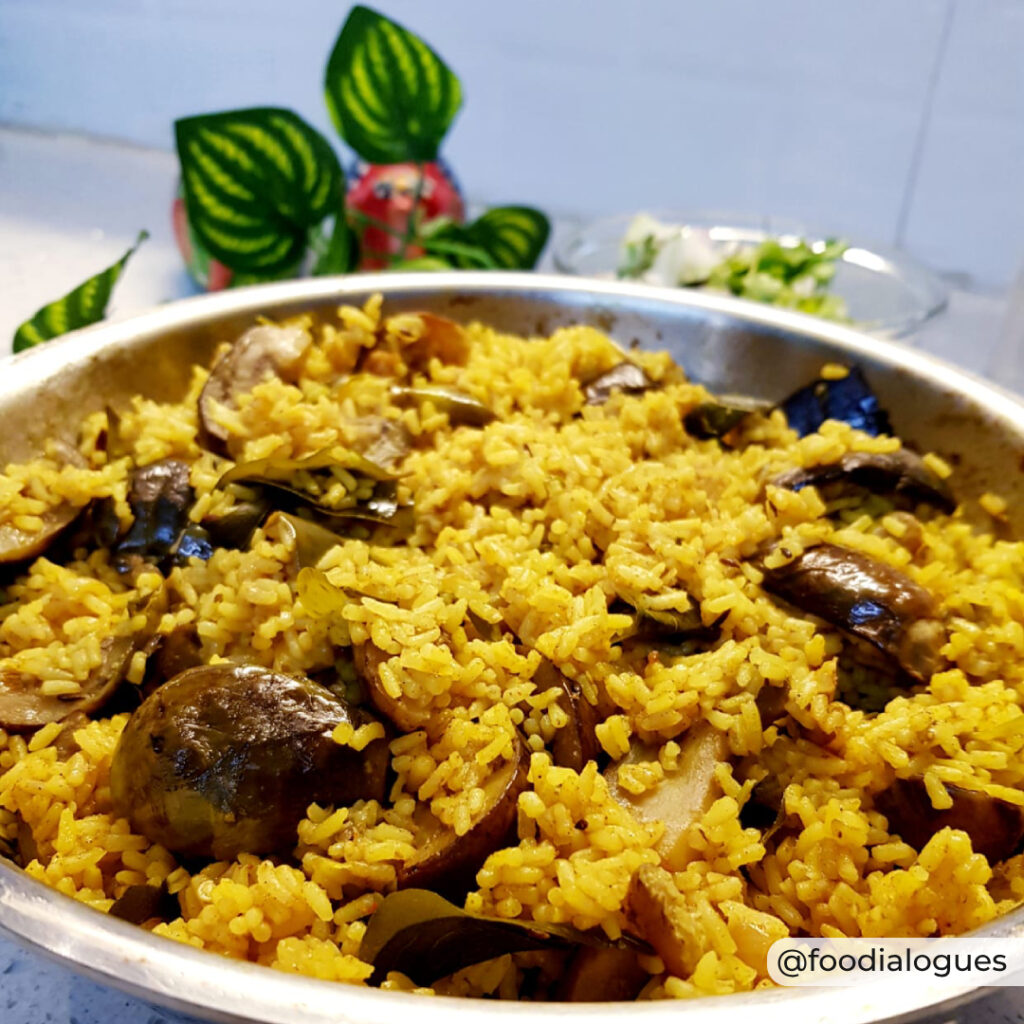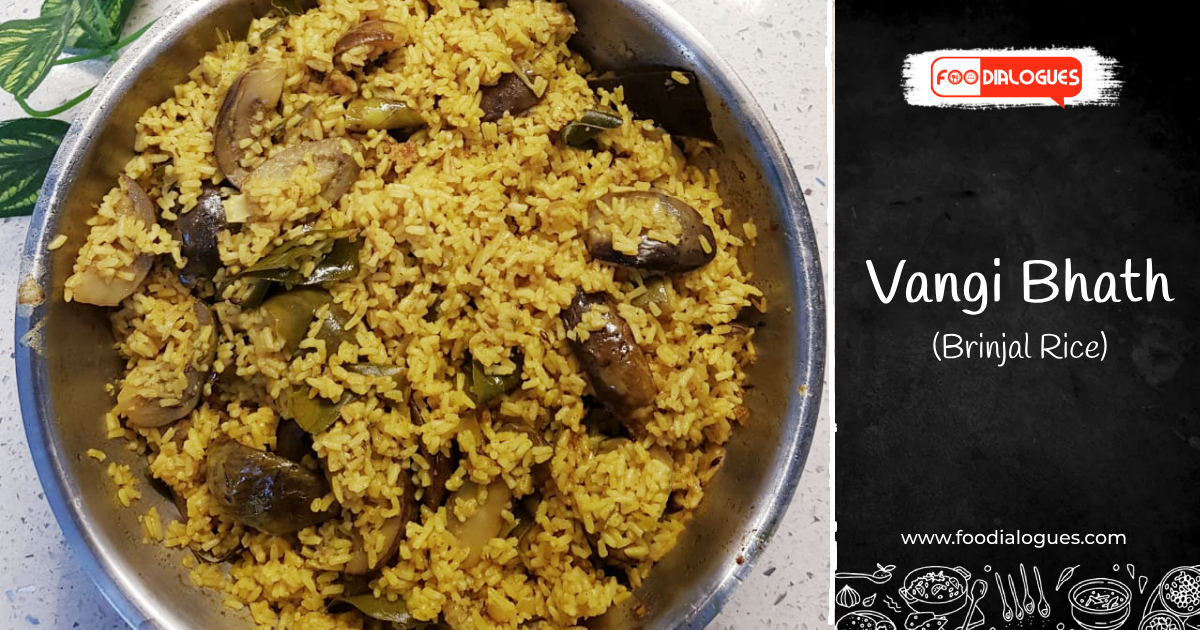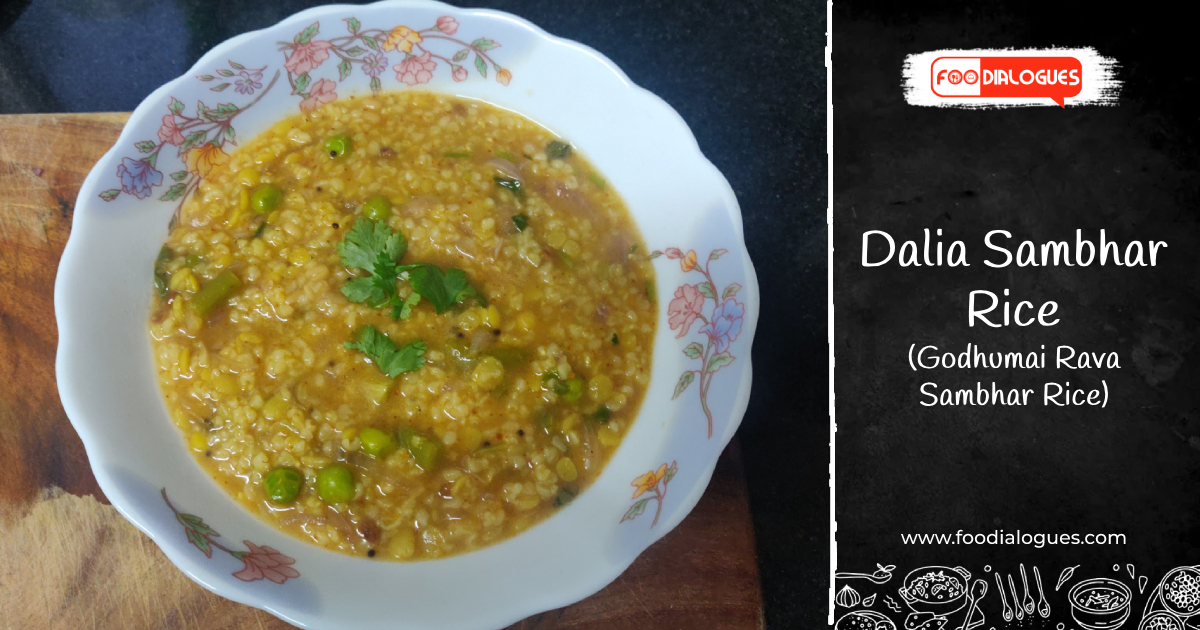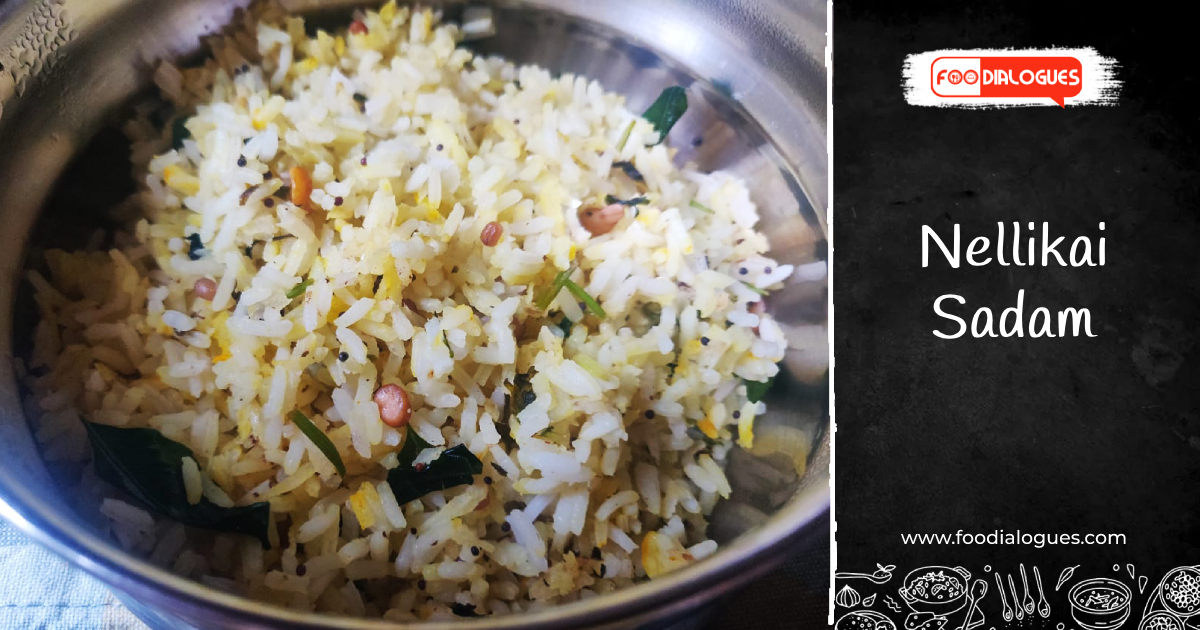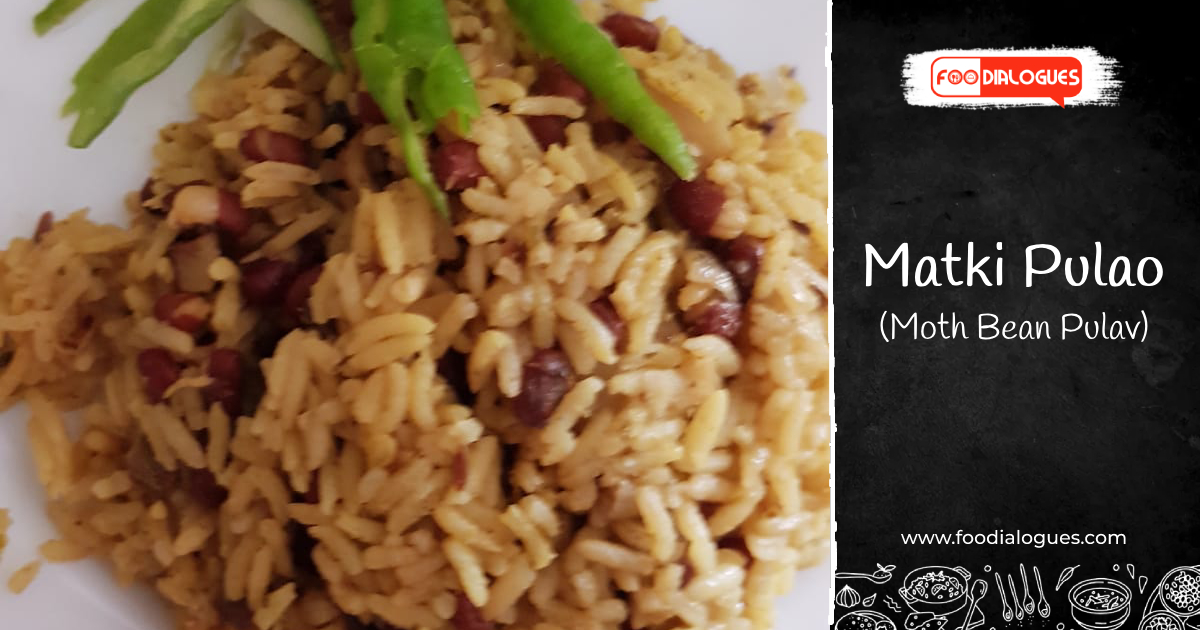Green ,white, yellow, striped, purple, and almost black…glossy and plump…aubergines in England, Eggplant in America, Kathirikai, Baingan, Vonkaya in India ..Brinjal is a well-traveled vegetable and we can be proud that it is “us’ Indians who have shared this treasure with the world. In the Italian city of Palermo, Eggplant Olympics is organised during peak summer. The best of the best culinary experts come here to prepare incredible gastronomic masterpieces from this vegetable. Low in calories, fat, and sodium while high in fibre and nutrients such as potassium, magnesium, folic acid, Vitamin B6 and A this delicious vegetable is buttery & delicious when cooked.
Brinjal contain phenolic compounds known as Anthocyanins that discolour the sliced vegetable. The seeds & flesh of a Brinjal also contains a chemical compound solanine that contributes to the bitterness. Both of these though not toxic can mar the taste of the meal. To prevent browning and bitter taste you can slice or cube the Brinjal and toss with some salt. Salting or “sweating” helps in drawing out the bitterness and prevents discolouration. Sweating a Brinjal will also reduce the amount of oil it will absorb during cooking process. Another method commonly used is to place the sliced vegetable in water.
When Brinjal slices are fried, their spongy texture absorbs a surprising amount of oil. As their air pockets collapse, some of the oil is released. The oil still left in the vegetable tissues contributes to the soft, buttery texture that’s so appealing. Oil also carries the essence of added herbs and spices, so that the Brinjal dishes become rich with the aromas and heady flavours of onions, chillies garlic and all that we add to make it more flavourful.
Foodialogues brings to you a delicious rice …. Vangi bhath,….popular in Karnataka. I have used small whole Brinjal and the rice is aptly flavoured with spices that complement the vegetable.
VANGI BHATH / BRINJAL RICE/ KATHRIKAI SADAM RECIPE
Ingredients for Vangi Bhath Recipe:
- Small whole brinjal 250 g
- Cooked raw rice 2 c
- Peanuts ¼ c
- Red chilly broken 4
- Curry leaves few
- Slit green chilly 4
- Salt as required
- Oil 2 tbsp
- Mustard seeds 1 tsp
- Turmeric powder 1 tsp
- Asafoetida 1 tsp
- Channa & urad dal 1 tsp each
- Vangi bhath powder 3 tbsp
- Grated coconut 1 tbsp
- Coriander leaves finely chopped 1 tbsp
- Thick tamarind extract from lemon-sized tamarind 1/4 c
- Jaggery powder 1 tsp
Preparation Method for Vangi Bhath Recipe:
- Spread the cooked rice on a plate, drizzle some oil, and allow to cool.
- Wash and remove the stalks of the brinjals.
- Slit into 4 keeping the stem portion intact.
- Take a heavy bottomed pan, add oil, splutter mustard, add dals and asafoetida along with red chilly. Add the peanuts and coconut and fry all till done. Add curry leaves, green chillies, and brinjals. Sauté and add turmeric powder. Follow this with Vangi bhath powder.
- Add tamarind extract, required salt and bring to a slow boil. Simmer till oil floats on top and brinjals are cooked but should not be soft.
- Add jaggery and boil till the extract becomes thick like a jam.
- Switch off the flame and add the cooked rice. Mix well and serve garnished with coriander leaves.
Delicious & Flavourful “Vangi Bhath” is ready 🙂
